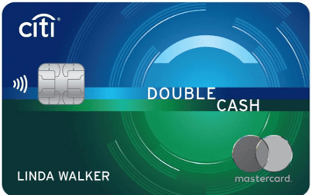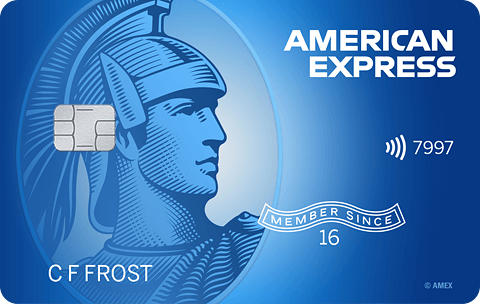The no-annual-fee Klarna credit card, issued by WebBank, doesn’t function like a traditional credit card. It works more like a charge card that requires the balance to be paid off in full each month, but with exceptions if you need more time to pay off a purchase.
In those cases, you can pay in installment windows of one month, three months or six months, which will be familiar to anyone who’s used a buy now, pay later service like Klarna. The Klarna Card, though, can be used anywhere, not just with merchants that work with Klarna.
The problem, however, is that unlike many buy now, pay later services, you will owe interest during those installment windows. Plus, the card doesn’t earn rewards itself, nor does it report to any credit bureaus as of this writing. So while it can help you finance a purchase, it can’t help you with your credit scores.
Beyond that, keep in mind that many major issuers already offer similar pay-over-time options on their credit cards. With good credit (typically, credit scores of at least 690), you could qualify for a credit card that offers a 0% introductory APR for 12, 15 or 18 months, sometimes longer. And unlike the Klarna credit card, many of those products also offer ongoing rewards.
Here’s what to know about the Klarna credit card.
1. There’s a waitlist
As of this writing, the Klarna Card has a waitlist that requires a few steps to join. To get started, you’ll have to click the sign-up button on the card’s website, scan the QR code to download Klarna’s app, create a login account, type in a verification code sent to your email, and then select the option to join the waitlist. That’s quite a few steps to go through, considering that some cards with waitlists let you join with the click of a button.

Applications will open up in phases, according to the sign-up process. Once you apply, only a “soft” credit check is performed, meaning it doesn’t impact your credit scores like traditional credit card applications do. Once you’re approved, you’ll get a virtual card that can be used immediately. You’ll also have the option to order a physical card.
For an option with no waitlist, consider a card like the Citi Double Cash® Card. It earns 2% cash back: 1% for every dollar spent and 1% back for every dollar paid off. As a Citi card, it also offers Citi Flex Pay, which allows you to pay off purchases of $75 or more in fixed payments at a fixed interest rate over an established timeframe.
The Klarna Card itself doesn’t earn rewards, although you can earn cash back when you shop with select merchants through Klarna.
2. You can’t maintain a balance over a long term
The Klarna Card is not designed to function like a traditional credit card. It requires a payment in full every month to avoid interest charges. Such a requirement can be helpful in keeping debt from spiraling, but the ability to pay a balance in full to avoid interest charges isn’t new. It has been a longstanding option available on traditional credit cards.

If you prefer to keep your options open, consider a card like the Blue Cash Everyday® Card from American Express for online shopping and everyday expenses. For U.S. online retail purchases, you can earn 3% cash back on up to $6,000 per year. You’ll also earn 3% cash back at U.S. supermarkets on up to $6,000 per year in purchases, and 3% back at U.S. gas stations on up to $6,000 per year. On all other purchases, you’ll earn 1% back, which will also apply once you meet the spending limit in the rewards categories. New cardholders also get a welcome offer, which you won’t get with the Klarna Card. Earn a $200 statement credit after you spend $2,000 in purchases on your new Card within the first 6 months. Terms Apply.
If you need to carry a balance over a long term, know that a rewards credit card like this one also charges a high interest rate, so it’s not an ideal option. If you need time to pay down a purchase, though, the Blue Cash Everyday® Card from American Express offers AmEx Plan It®. You can potentially divide qualifying purchases of $100 or more over a certain period of time for a fixed monthly fee, instead of paying interest charges. (Simply using or enrolling in AmEx Plan It® does not earn you any rewards, but purchases made under a plan qualify for rewards the same way as other purchases on the card would.)
3. You can pay for purchases in installments, but it’ll cost you
While you can’t revolve a balance on the Klarna Card, it’s possible to pay for an eligible purchase over a short term. If you make a purchase of $30 or more and the account is in good standing, you may have the option to use a “pay over months” plan. You can move a purchase onto next month’s statement or pay it off in installments over three or six months, but interest charges will apply. A purchase can qualify only once to receive this type of plan.
While this option may sound convenient, it’s important to understand that a hefty APR of nearly 29% (as of this writing) applies to “pay over months” plans. Considering this rate, think twice about literally buying yourself more time to pay down a purchase. If you rely on it frequently, it can end up costing you far more than a purchase is worth over time.
With a good credit score of 690 or higher, you may qualify for a credit card that offers a lengthy 0% introductory APR for purchases. The aforementioned Blue Cash Everyday® Card from American Express, for instance, offers 0% intro APR for 15 months on purchases and balance transfers, and then the ongoing APR of 19.24%-29.99% Variable APR. Terms apply.
🤓Nerdy Tip
For a low ongoing interest rate, also consider a credit card from a credit union. You’ll have to qualify for membership, but it can be worth it if you tend to carry a balance, as interest rates at these institutions don’t currently exceed 18%.
4. The amount available to spend fluctuates
The amount that you have available to spend on purchases with the Klarna Card is reassessed on a real-time basis, according to the card’s website. It can be less or more over time depending on your payment history and outstanding purchases.
You’ll be able to view the amount available to spend in Klarna’s app.
5. It doesn’t report payments to credit bureaus
One drawback of the Klarna Card is that you can’t use it to build credit at this time. Traditional credit cards generally report payments to all three major credit bureaus: TransUnion, Equifax and Experian. These companies record the data used to calculate your credit scores. Having your payment history recorded by them is an essential step in building credit.

